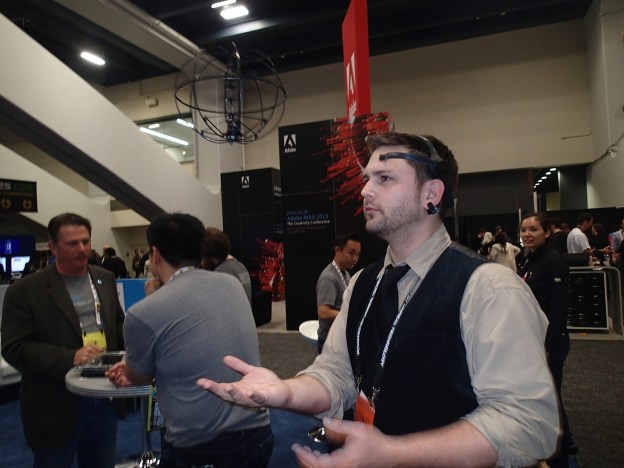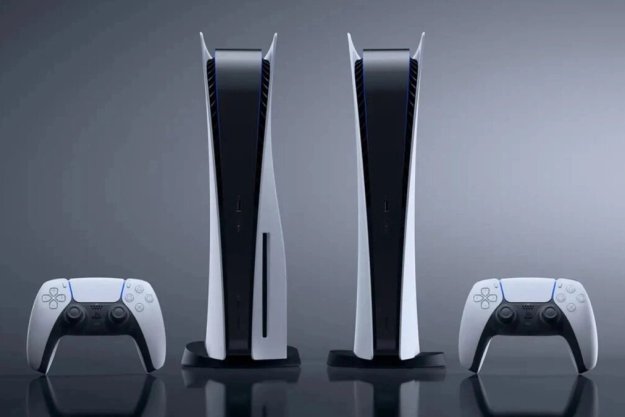 Someday very soon, the Kinect will be considered adorably primitive. While waving your hands into a camera-based controller may be cutting edge(ish) by today’s standards, the technology of tomorrow – brain-control interfaces (BCI) – are going to make it look positively goofy. Of course, this technology is currently best known for letting people wear cat ears that wiggle when you think, so it may be a little while. I’m convinced, though, that brain control is the future of gaming, and likely the future of all technology to some extent.
Someday very soon, the Kinect will be considered adorably primitive. While waving your hands into a camera-based controller may be cutting edge(ish) by today’s standards, the technology of tomorrow – brain-control interfaces (BCI) – are going to make it look positively goofy. Of course, this technology is currently best known for letting people wear cat ears that wiggle when you think, so it may be a little while. I’m convinced, though, that brain control is the future of gaming, and likely the future of all technology to some extent.
NeuroSky’s BCI is nothing new. Well, it is new, just not that new. The company was first incorporated in 2004, and has since been working on various forms of BCIs, but my first experience with the company came through its neurowear, the Necomimi brainwave cat ears.

The Necomimi are among the hottest items around for cos-players, which seems like a waste of potential – a very cool waste, but still. What this incredibly impressive and potentially world-changing technology really needed was obvious: a video game.
Sure, NeuroSky’s software that helps people with minor mental disorders like ADHD is neat. And it could help countless people, especially children and possibly the elderly. And yes, it could lead to further breakthroughs in neuroscience that will help the human species in countless ways and blah, blah, blah. None of that lets me throw a car with my brain. Similar technology may allow me to someday very soon drive a car with my thoughts, but that’s beside the point. Any technology that you can’t turn into something at least slightly frivolous really isn’t worth much these days.
NeuroSky also offers implementations like the Puzzlebox Orbit Helicopter, which allows you to control a tiny set of propellers inside a plastic sphere. Control might be too strong of a word though, since it only goes straight up and then drops when you lose your concentration – usually the moment you think about how weird it is to control a mini helicopter with your brain.
But even that technology is just an evolution of another concept that NeuroSky was involved with. In 2009, the company Uncle Miltion used the company’s chips to create the Star Wars Force Trainer, a device that allows you to control an orb similar to the one Luke used when first testing the Force while on the Millennium Falcon. This one won’t shoot you with lasers that you can deflect with a lightsaber – actually it just kind of hovers there, sadly non-menacingly – but it was a step in the right direction.
It’s just a matter of focusing your thoughts while tuning out everything else.
The game is still in the very early stages, so much so that its name is simply Throw Trucks with Your Mind. The game lets you… well, the title is fairly self-explanatory.
Donning the NeuroSky headset places a sensor on your forehead and a clip on your earlobe. You control your character’s normal movement with a keyboard and you view the game in a traditional first-person perspective, but all your special powers are accessed by your mind. Besides throwing things, you can also pull, lift, and bounce items, and if you are competing against another person, you can negate their powers as well.
The game recently reached its goal of $40,000 in funding on Kickstarter, and people at GDC had the chance to go head to head – quite literally – and basically practice their mutant powers against one another.

Although I was told my brainwaves were weak – something I accepted without question after several days at a convention filled with more than 20,000 people – I was able to try the game out and feel what it would be like to be a superhero. Or maybe that’s wrong – I was throwing cars at other people. Perhaps “hero” is the wrong word. Whatever, those that don’t like it will be among the first against the wall when my BCI powers exist outside of the digital world.
Overcoming my weak brain (which I was assured was more to do with having a thick skull than anything, something my friends and co-workers were quick to latch on to and have yet to stop talking about – one day they will regret that), I was able throw trucks around in a digital environment. There are several different tricks you can use to cause the EEG to spike and register a command. Some do math equations, others silently recite the alphabet backwards. I thought of an old rhyme over and over. It’s just a matter of focusing your thoughts while tuning out everything else. Once you “get it,” it’s a bit like realizing how to relax your eyes and see the old school 3D images made up of thousands of little dots – you can just ease into it with practice, but it’s a very specific talent.
Using NeuroSky in a game is really no different than seeing it at work on a helicopter, yet it’s somehow more amazing. I know, watching a physical object respond to your thoughts should be more impressive, but throwing things with your brain has been the dream of anyone who has ever seen an anime film ever, so there was something incredible about the sensation. You can even face off against someone else and have a real mental battle as you both stand on either side of an object and try to push it at the other. It’s a digital Jedi battle, and could be a harbinger of the future.
The game is little more than a tech demo with a competitive aspect thrown in, but it suggests a possible future for the gaming industry that goes beyond finding new ways to immerse ourselves in the games.
Rather than hitting a button, you just think them away.
One day in the not too distant future, you will be able to jump into a virtual reality setting and use the BCI to control the environment. It will be a telekinetic simulator. If people thought Grand Theft Auto was bad, wait until they see games where you can destroy cities with your brain. It will be glorious.
Even if that level of integration is a ways away, imagine playing a game on your home console while wearing a headset. As you control your character with a standard controller, you see an enemy running towards you. Rather than hitting a button, you just think them away. That, my friends, is the future of gaming, and likely a lot more than that.
Assuming, of course, we don’t find a way to destroy ourselves with this technology first. Call it 50/50.


